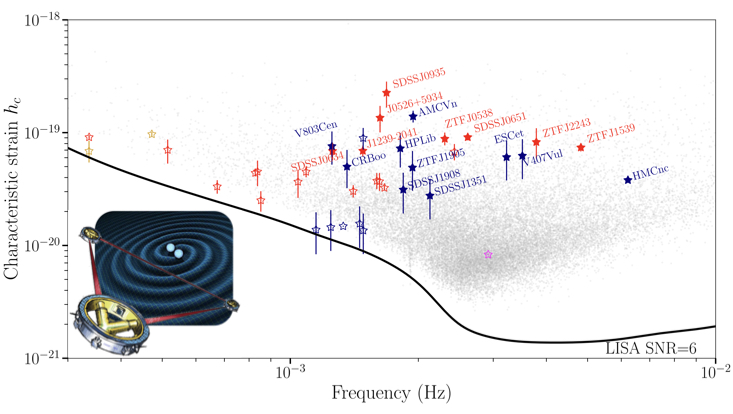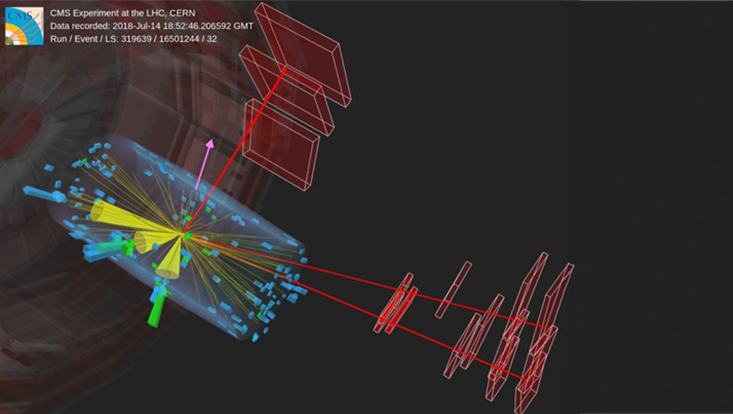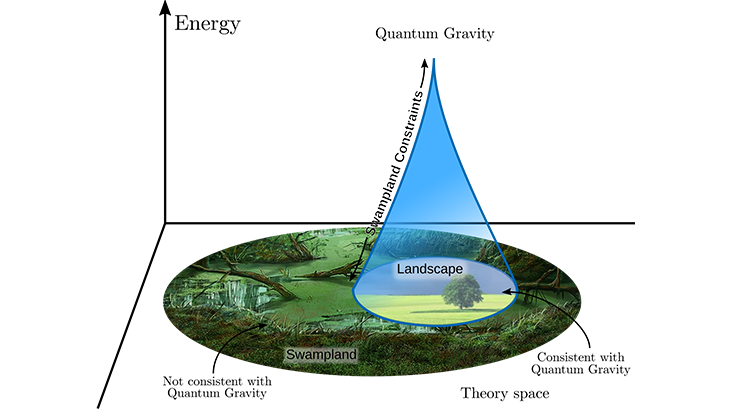New Galactic Binaries to Enable LISA Hunt for Black Holes
7 February 2025

Photo: Kupfer et al. (2024) and LISA/ESA
Compact binary systems containing a white dwarf or neutron star emit low frequency gravitational waves. Cluster of Excellence Quantum Universe researcher Thomas Kupfer, in an international collaboration, recently identified new binaries in our Galaxy, which could prove crucial to validate the LISA (Laser Interferometer Space Antenna) Observatory performance.
Compact binary systems composed of degenerate stellar remnants (white dwarfs, neutron stars, and black holes) with orbital time periods of less than a few hours are predicted to be strong gravitational-wave (GW) sources in our own Galaxy. Some of these systems display remarkably short orbital periods, down to just several minutes. Binaries in such a tight orbit emit GWs at millihertz frequencies that can be detected directly with the future gravitational wave observatory LISA, being readied for launch in the middle of the next decade. Crucially, these binaries may be useful in the early months of the mission operation in helping to validate LISAʼs performance in comparison to prelaunch expectations.
A number of these systems—primarily consisting of a neutron star or white dwarf paired with a compact helium star, white dwarf, or another neutron star—have been identified through observations in optical and X-ray electromagnetic (EM) wave bands.
The LISA mission, which is a space-based European Space Agency (ESA)-led GW observatory, is currently scheduled for launch in the mid-2030s. Designed to operate between frequencies of 0.1 and 100 mHz, LISA is an ideal tool for discovering extragalactic massive black hole mergers and extreme- or intermediate-mass ratio inspirals. In addition, it can survey the shortest time-period stellar remnant binaries throughout the entire Milky Way, providing a view of our Galaxy complementary to EM surveys.
Both theory- and observation-based studies find that LISA will deliver a sample of ∼104 binaries with orbital periods of less than an hour (frequency ∼0.6 mHz), which will be complete up to periods of less than 15 minutes (frequency ∼2 mHz). For a significant number (102) of stellar remnant binaries—primarily those composed of two white dwarfs—discovered by LISA, it will be possible to study them in combination with EM surveys.
Stellar remnant binaries known from EM observations are often termed verification binaries. This is based on the idea that one can model their GW signal using EM measurements of the binary’s parameters and then test LISA’s data quality. Known binaries will be most crucial in the early weeks/months of the mission operation in helping to validate the early performance of the instrument in comparison to pre-launch expectations
A verification binary is defined as a system that becomes detectable, which is judged based on the shape of the recovered posteriors on binary’s parameters rather than an S/N threshold, within 3 months of observation time with LISA. In contrast, a detectable binary is one when it is detected after 48 months (at present set as the nominal lifetime of the LISA mission). A targeted analysis was performed by fixing the binary’s sky position and orbital period to the values provided by EM measurements while marginalizing over other parameters.
The authors improved the sample of candidate LISA verification binaries in a number of ways: They include several newly discovered systems since the astrometry Gaia Data Release (DR2) and re-evaluated the distances based on improved astrometry from Gaia Data Release 3 (DR3), while also taking into account their proper motion information. In addition, they evaluated their detectability as well as the binary parameter estimation in a fully Bayesian way using the up-to-date LISA sensitivity requirements. The results yielded 18 verification binaries and 22 detectable sources, which triples the number of known LISA binaries over the last few years. The full list has 55 candidate LISA-detectable binaries with measured properties, for which distances were derived based on Gaia Data Release 3 astrometry.
The figure above shows the characteristic GW strain plotted versus the GW frequency for binaries of different types: detached double white dwarfs (DWDs) in red, semi-detached double white dwarfs (known as AM CVn) binaries in blue, one ultracompact X-ray binary(UCXB) in magenta, and two hot subdwarf binaries(sdBs) in yellow. Filled stars represent verification binaries detectable within 3 months of observations. The black solid line represents LISAʼs sensitivity curve at S/N = 6 that accounts for the instrumental noise and Galactic confusion foreground. For comparison, gray points are the simulated mock Galactic DWD population detectable with LISA, revealing that the current sample of known binaries is mainly representative of the loudest GW sources in the Milky Way, while the majority lie inaccessible to EM observatories, yet to be discovered in more remote parts of our Galaxy.
Across verification binaries, the GW amplitude is expected to be measured to ∼10% on average, while the inclination angle is expected to be determined with ∼15° precision. For detectable binaries, these average errors increase to ∼50% and ∼40°, respectively. Through such measurements, LISA will uncover a new window to understand the formation and evolution of compact binaries in our Galaxy.
Tripling the number of verification binaries in our Galaxy available to LISA promises to be crucial for validation of the performance of LISA in its early months after launch, as the mission starts to monitor more prolonged signals from merging massive black holes.


